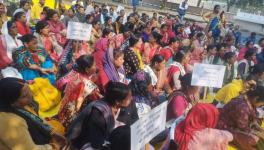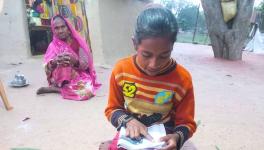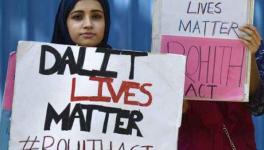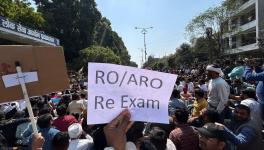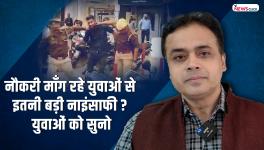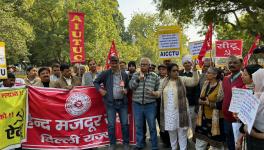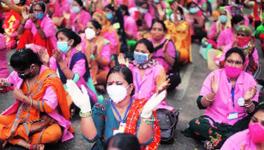UP: Despite Vaccination Children Lost to Encephalitis, Say Parents
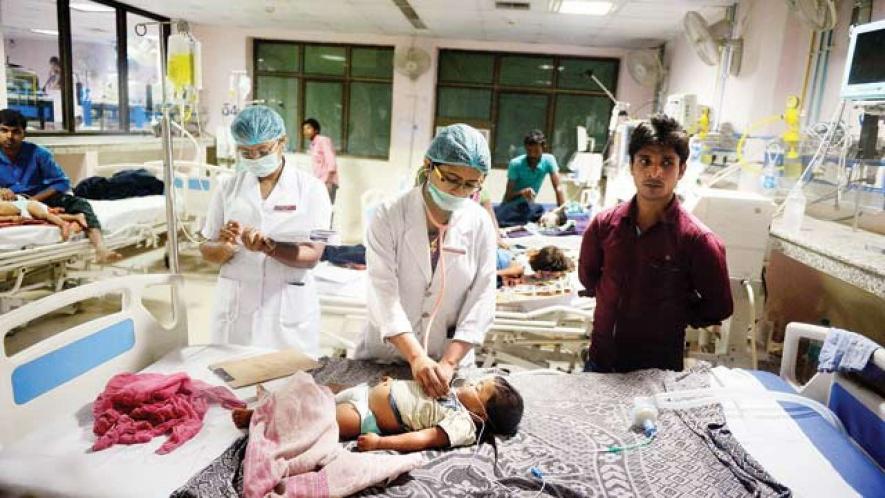
Representational Image. Image Courtesy: DNA India
New Delhi: The innumerable stories of deaths due to Acute Encephalitis Syndrome (AES) and Japanese Encephalitis (JE) at Gorakhpur’s BRD Medical College are a testimony of the state’s apathy. The cries of grieving parents puncture the Uttar Pradesh government’s claims about making all possible efforts to fight and eradicate the deadly diseases.
The parents of three children, like many others—who have lost their children forever—narrate a similar tale, how vulnerable and marginalised communities, primarily dalits and poor, have been hit the hardest.
On being asked about the efforts undertaken by the government to prevent the deadly fevers from spreading, all the three families—each earning less then Rs 6,000 a month and belonging to three villages in Gorakhpur, Kushinagar and Siddhart Nagar districts in eastern region of the state—repeated the same thing: preventive vaccinations did take place, the risks of the diseases were explained, toilets were built and tube wells were dug up. But all these happened after the deaths.
Concerns for hygiene and sanitation—necessary to control the spread of these diseases—are secondary for them as they are occupied by their struggle to make ends meet.
Also read:BRD Child Deaths: Did 18 Adults Too Die That Day in 2017? How?
AES is an umbrella of medical conditions that affect the brain. It is caused by a wide range of viruses, bacteria, fungi and parasites, while JE is a mosquito-borne disease caused by the Japanese encephalitis virus and spread primarily by the Culex mosquito. The latter is also a brain infection and its symptoms may include headache, vomiting, fever, confusion and seizures. It is the most common form of viral encephalitis, which occurs periodically in endemic areas leading to high mortality and neurological deficits in survivors.
Sailesh Prasad, Ghoshi Tola, Padrauna Tehsil, Kushinagar
His youngest daughter Ragani, four and a half years old, was admitted at BRD Medical College with AES no. 9 (number assigned to AES patients) on January 4, a day after she suffered high fever and seizures. She was diagnosed as JE positive. Despite doctors’ efforts to save her she breathed her last on January 5.
“She had got high fever. We thought it was pneumonia. But when she started having seizures, we took her to the CHC (nearby community health centre), from where she was referred to (BRD) medical college. The doctors just told us it was dimaghi bukhar. A day later she died,” Prasad, 33, told NewsClick.
As per the government’s scheme for encephalitis patients, her parents should have been compensated with Rs 50,000. Eleven months have passed since her death, but Prasad—a daily wage labourer—is still running from pillar to post to get the money. He said he has submitted all necessary documents to the office of chief medical officer (CMO), Kushinagar, but no one has responded to him so far.
“We are very poor. I have a sewing machine at home. If someone comes up with a piece of cloth for stitching or alteration works, I do it. But it is not regular because I don’t have any tailoring shop. If there is no stitching work, I work in fields on daily wage. I earn a maximum of Rs 5,000-Rs 6,000 a month, which is not at all sufficient to feed the family of five,” he told NewsClick.
The family, belonging to dalit community, lives in extremely poor condition in a thatched hut. “We have never had enough money to build a pakka house. We live with three children in this hut, which is unable to protect us from extreme cold and rain water,” he said.
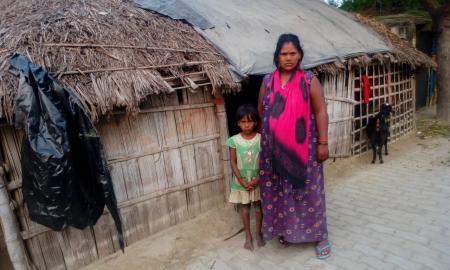
Shailesh Prasad's wife and daughter standing in front of their thatched roof house.
On being asked about the government’s claims of vaccination, he said, “Our children are also vaccinated. We were under the impression that she would be safe as she was immunised. We did not know that we still had something to worry about.”
Doctors at BRD Medical College said AES infection after immunisation is only possible in two situations: either two doses of the preventive vaccine have not been administered within the prescribed time limit or the cold chain is not maintained that brings down the efficacy of the medicine.
Prasad added that he had to pay even for the toilet, “We got Rs 12,000 from the government. I had to chip in nearly Rs 10,000 from the little saving I had.” He leaves for finding work every day early in the morning. “Some times, I get it and sometimes don’t. Returning home without any work and nothing in hand to feed the family is like dying a hundred death because the wife and children wait for me to return either with some money or ration so that stoves can be lit,” he added.
After the death, a flurry of government officials followed, armed with lessons on sanitation and cleanliness. Prasad’s wife, still stunned, said, “What will I do by crying now. I have three more kids, who I have to protect. My husband still cries at night though.”
When questioned about compensation, Kushinagar CMO Dr Sudarshan Sonkar said, “Whenever such cases come to us and if there are funds, we immediately approach the aggrieved families and get the amount disbursed following field and paper verification process. At present, we are running short of funds despite the fact that we have sent requisition several times. Once it comes, the family will be compensated at the earliest.”
Also read: Is BRD College Hiding Encephalitis Cases by Creating New Illness Category
He also asked this reporter to send him the family details so that he can personally look into the matter and ensure the family gets the amount.
Adalat Ram, Mahuwa Mafi, Lotan tehsil, Siddhart Nagar
Adalat Ram’s 15-year-old son Shivanand was healthy a few days before January 6. Suddenly, he had high fever and was rushed to BRD Medical College on January 6. He was assigned AES number 11. He too was tested JE positive, as per his medical report and CR number, which is 5690.
He died nearly 15 days after he was admitted. The family alleged that they were not explained the reasons of the death. But his medical reports suggest that he was suffering from encephalitis—a claim outrightly denied by the district’s CMO.
“We are very poor and illiterate. It’s going to be almost a year since my son died at (BRD) medical college. But, we still don’t know how it happened. The doctors did not tell us anything. They gave us a piece of paper and asked us to go back home. District health officials visited us thrice for inquiry, but we are still awaiting for a compensation from the government. Nobody cares about us because we are poor and marginalised dalits,” he told NewsClick, his voice choking with emotions.
He was the only son among his three children. The rest two are daughters. Since he was assigned an AES number, it means he was suffering from encephalitis and he is entitled for a compensation of Rs 50,000.
But the CMO Siddhart Nagar Dr Seema Rai said he died of Tuberculous Meningitis, which impacts central nervous system and has very high morbidity and mortality. “We send a report of such deaths on the basis of medical reports in a prescribed format to the state headquarters in Lucknow. Experts there analyse and give their opinion on the exact reason for the deaths. In fact, they are the ones who decide whether or not the patient was suffering encephalitis. If they conclude encephalitis, we are given a budget which we disburse without delay,” she said.
Asked about Shivanand, she said, “He died of Tuberculous Meningitis and therefore, the family has not been given any compensation. A total of 10 cases of encephalitis have been registered in Siddhart Nagar so far, but there is no death.”
But her claims were rejected by doctors at BRD who said the government is trying hard to lower the actual number of encephalitis cases. “And therefore, we have been asked to admit fever patients in general ward under the AFI category. Following diagnostic examinations, those who are found AES or JE positive, they are allotted a unique AES number and shifted to encephalitis ward. But only lucky ones get this number. Those who are admitted in critical conditions don’t get a chance to be shifted to AES ward. By the time their examination reports come and they start getting proper medication, they die without being declared AES patient in the record,” said a visibly agitated doctor on condition of anonymity.
Ideally, he said, all patients should be admitted in AES ward and their treatment should begin according to protocol under the BRD. “Unfortunately, the poor patients are not getting the treatment they should receive soon after their arrival in the hospital because of the faulty policy of the state health department and the BRD administration. It’s almost as good as killing them, that despite knowing the disease a patient is suffering from, our hands are tied not to give him or her proper treatment,” he revealed.
“Every patient is given a CR number, which comprises of patient’s history and cannot be tampered with. Go and check the CR record and it will puncture the government’s claims regarding the least number AES/JE deaths,” he alleged.
With two surviving children, Adalat listened wordlessly to those who came after his son's death to educate him about AES. He, too, has a toilet outside his kachcha house and the village has tube wells. Also, there are ponds every where and there has never been any fogging here.
Subodh, Bargo, Sahjanwa, Pali tehsil, Gorakhpur
Subodh’s 7-year-old daughter Shrishti also died of Japanese encephalitis 15 days after she was admitted at BRD Medical College on January 4. She was allotted AES number 8 and CR number 4224. Her family is still waiting for the compensation.
“She was suffering from mastishk jawar (brain fever). That’s what we were told by the doctors,” said Shrishti uncle Pramod.
That fateful evening, Shrishti’s mother Deepu called her husband, Subodh, who works as a labourer at a factory at Faridabad in Haryana and described the progression of the disease as high fever, confusions, convulsions, nausea, rigid limbs and finally death.
She said, “He didn’t know what to say, neither did I. We stayed quiet on the phone and then he hung up.”
The family from the other backward castes (OBC) community relies on Subodh’s meagre income of around Rs 7,000 a month to get by. Their children never went to school.
After my daughter’s death, said Deepu, district officials, doctors and other paramedical staff came in hordes. “Our blood samples were taken and and tested. We were asked to keep the surrounding clean and drink water from government tube wells. But we are yet to receive compensation from the government,” she said.
When asked why the compensation has not been given to the family, Gorakhpur CMO Dr Shrikant Tiwari said, “There must be some problem in papers and that is why, compensation has not been released. Let me investigate. If the case is genuine, they will be given compensation.”
ENCEPHALITIS — A SAGA OF ADMISSION AND REJECTION
Of the total 492 cases of AES—according to data accessed by NewsClick from BRD Medical College—reported from January this year till November, 116 patients were found to be JE positive. Similarly, out of 1,563 patients admitted under AFI (Acute febrile illness) — a new category of diseases allegedly introduced only this year with an aim to bring down the number of AES cases, 215 were found to be suffering from JE.
It means, 331 cases of JE have been reported at the BRD Medical College so far.
Another unofficial data compiled from January 4 till October 11 this year, stated that, a total of 74 cases of Japanese Encephalitis have been registered only at BRD Medical college only. It does not include the number of cases detected in civil hospitals and health centres across Gorakhpur and its surrounding regions.
There is an absence of any official data—which the BRD Medical College has stopped releasing since August 2017 when it hit headlines in the country and abroad after over 60 children died in the span of 54 hours when liquid oxygen supply dried up in the Neo-natal Intensive Care Unit (NICU) of the hospital.
Get the latest reports & analysis with people's perspective on Protests, movements & deep analytical videos, discussions of the current affairs in your Telegram app. Subscribe to NewsClick's Telegram channel & get Real-Time updates on stories, as they get published on our website.









